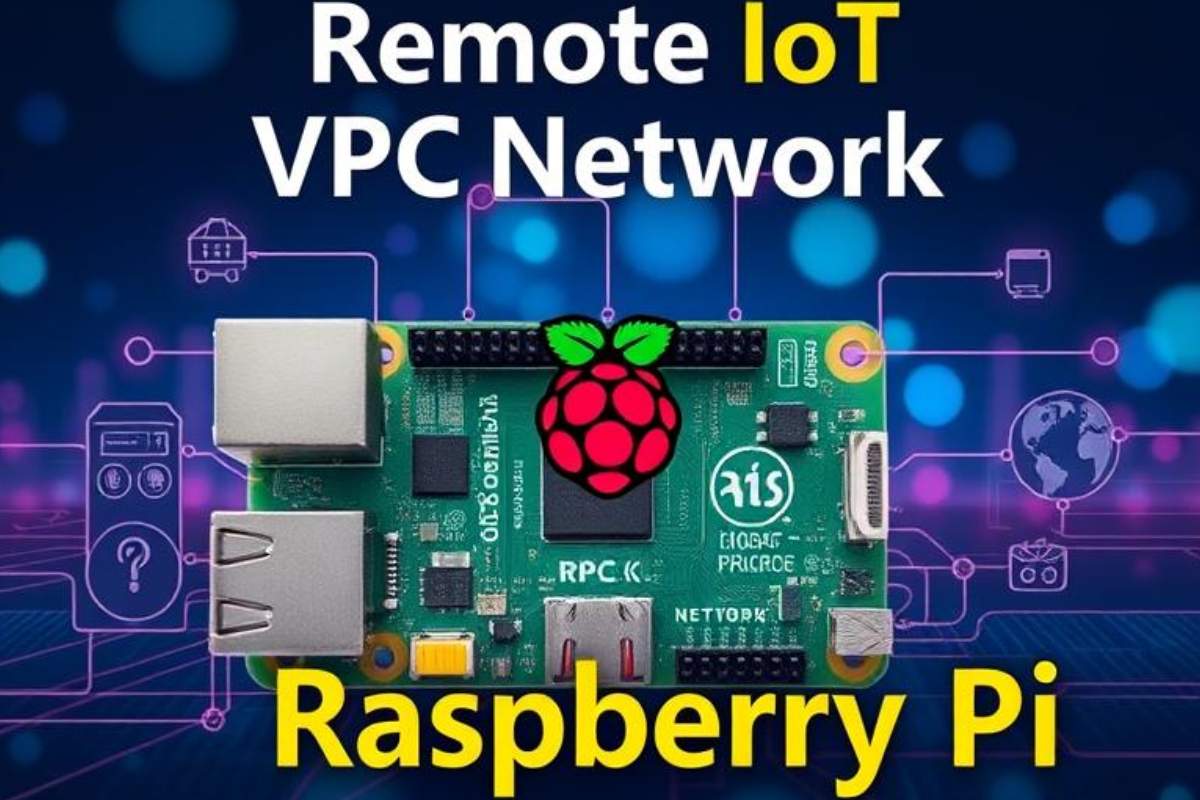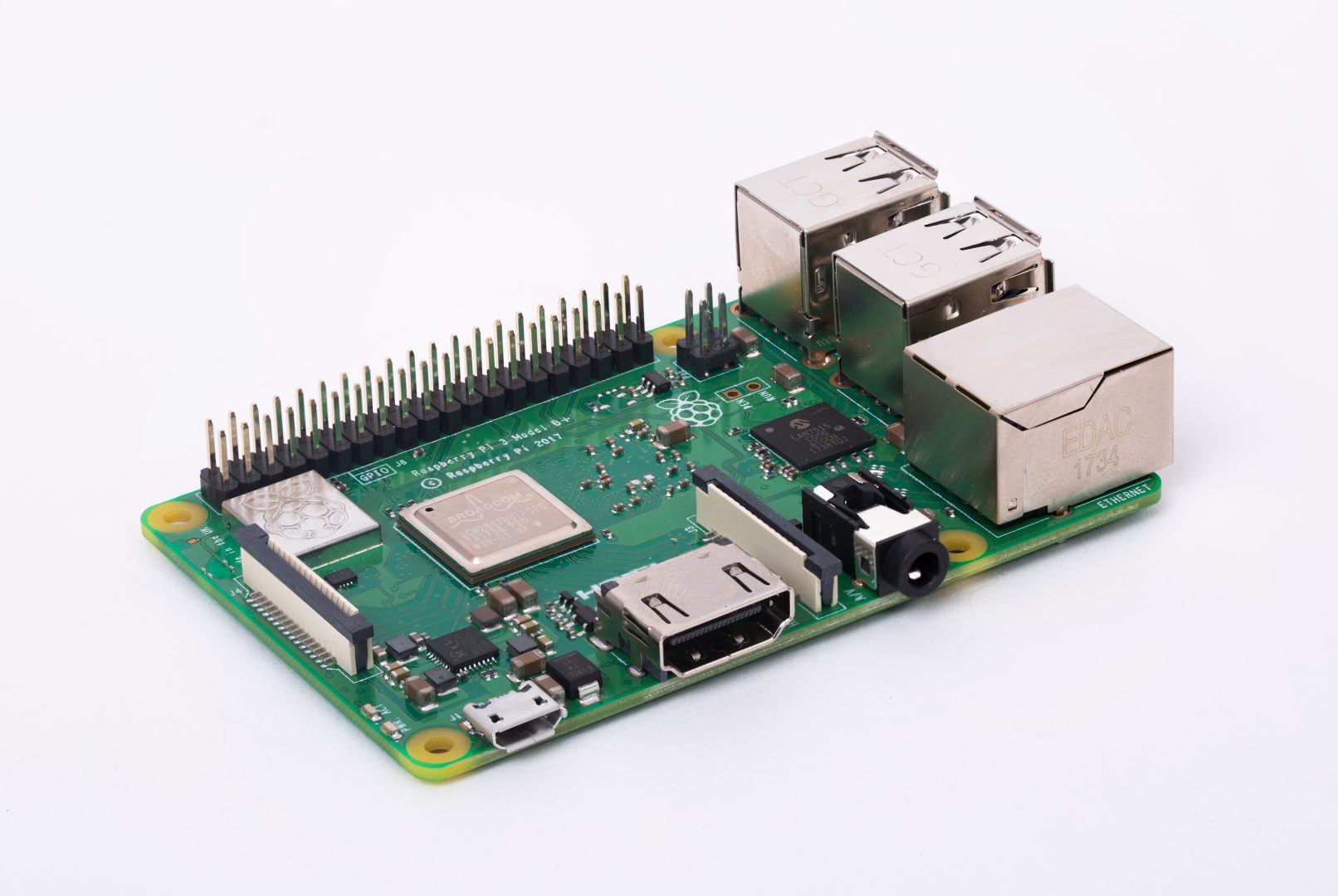Unlock Remote IoT Potential: Raspberry Pi & VPC Network Guide
Ever dreamt of controlling your smart home from the beach, or monitoring your agricultural sensors from across the globe? The reality of seamlessly managing your IoT devices remotely, securely, and cost-effectively is not just a futuristic fantasy, but a tangible capability with the power of Raspberry Pi and Virtual Private Clouds (VPCs).
The landscape of the Internet of Things (IoT) is expanding at an unprecedented rate. As more devices become interconnected, the need for secure and reliable remote management becomes paramount. The combination of a Raspberry Pi, a versatile and affordable single-board computer, with the robust security and scalability of a VPC provides a powerful solution. While the term "remote iot vpc network raspberry pi" might initially seem daunting, its underlying principles are surprisingly accessible, offering a gateway to a world of remote control and data management possibilities.
| Aspect | Description |
|---|---|
| Core Concept | Securely managing and controlling IoT devices from any location. |
| Key Components | Raspberry Pi, Virtual Private Cloud (VPC), Internet of Things (IoT) devices. |
| Benefits | Remote access, enhanced security, scalability, cost-effectiveness. |
| Use Cases | Smart homes, industrial automation, environmental monitoring, agriculture, healthcare. |
| Complexity | Can be initially challenging, but readily achievable with the right guidance. |
| Essential step | Securely connecting remote iot devices using a vpc and raspberry pi. |
| Guide Aim | Setting up a remote iot system using vpc, ssh, and raspberry pi, all while keeping costs. |
| Requirement | Robust and safe iot ecosystem. |
| Technology | Virtual private cloud (vpc) technology. |
| Integration | Managing and monitor their iot devices remotely, ensuring seamless communication and data exchange. |
| Task | Securely connecting your raspberry pi to an aws vpc using remoteiot. |
| configuration | Gold standard |
The allure of IoT lies in its capacity to transform both professional and personal spheres. The ability to remotely monitor and manage these devices is no longer a luxury but a necessity. Imagine controlling the temperature of your greenhouse, monitoring the energy consumption of your factory, or receiving real-time data from environmental sensors – all from the comfort of your office or home. This level of control requires a secure and reliable network infrastructure, and that's where the combination of Raspberry Pi and VPC shines.
- Filmy4wap Fly Your Ultimate Guide To Streaming And Downloading Movies
- 7star Hd Movies Your Ultimate Guide To Streaming Highquality Films
So, how does it all work? At its essence, a remote iot vpc network raspberry pi setup involves creating a secure tunnel between your Raspberry Pi, acting as a gateway for your IoT devices, and a VPC, a logically isolated section of a public cloud. The VPC provides a private network where your Raspberry Pi and IoT devices can communicate without being directly exposed to the public internet. This significantly reduces the risk of unauthorized access and data breaches.
One of the primary advantages of using a VPC is enhanced security. By isolating your IoT devices within a private network, you create a barrier against external threats. You have complete control over network access, defining specific rules and permissions to ensure that only authorized devices and users can communicate with your IoT infrastructure. Furthermore, VPCs typically offer advanced security features such as intrusion detection and prevention systems, further bolstering your defenses.
The Raspberry Pi, with its compact size, low power consumption, and versatile connectivity options, serves as an ideal bridge between your physical IoT devices and the digital realm of the VPC. It can collect data from sensors, control actuators, and perform local processing before transmitting information to the cloud for further analysis and storage. The Raspberry Pi's affordability also makes it an attractive option for deploying IoT solutions at scale.
- Maddy May The Rising Star You Need To Know About
- Why Filmyfly Movie Download Is Becoming A Big Deal In The Streaming World
Setting up a remote iot vpc network raspberry pi may seem like a complex undertaking, but numerous resources and tools are available to simplify the process. Cloud providers like Amazon Web Services (AWS), Google Cloud Platform (GCP), and Microsoft Azure offer comprehensive VPC services with detailed documentation and tutorials. Additionally, various open-source projects and online communities provide guidance and support for configuring Raspberry Pi devices to connect to VPCs.
A key aspect of a successful implementation is ensuring secure communication between your Raspberry Pi and the VPC. This typically involves setting up a Virtual Private Network (VPN) or using Secure Shell (SSH) tunneling to encrypt data transmitted over the internet. Strong authentication mechanisms, such as public-key cryptography, should also be implemented to prevent unauthorized access to your Raspberry Pi and IoT devices.
Another crucial element is configuring the VPC routing tables correctly. Routing tables dictate how network traffic is directed within the VPC and between the VPC and the outside world. It's essential to carefully define these rules to ensure that data flows correctly between your Raspberry Pi, IoT devices, and other resources within the VPC. Incorrectly configured routing tables can lead to connectivity issues and security vulnerabilities. It is important to Remember to take a peek at the vpc routing tables to ensure that everything is set up correctly.
The versatility of Raspberry Pi in IoT applications is well-documented. From home automation systems that control lighting, temperature, and security to industrial monitoring solutions that track equipment performance and environmental conditions, the Raspberry Pi has proven its worth in a wide range of scenarios. These examples illustrate the potential of Raspberry Pi in iot applications.
Consider a smart agriculture application where Raspberry Pi devices are deployed in fields to collect data from soil moisture sensors, weather stations, and cameras. This data is then transmitted to a VPC for analysis, providing farmers with valuable insights into crop health, irrigation needs, and potential pest infestations. By remotely monitoring these conditions, farmers can make informed decisions to optimize yields and reduce resource consumption.
In the realm of industrial automation, Raspberry Pi devices can be used to monitor equipment performance, detect anomalies, and trigger maintenance alerts. By connecting these devices to a VPC, engineers can remotely access real-time data, diagnose problems, and even control equipment remotely. This can significantly reduce downtime, improve efficiency, and enhance overall productivity.
Another compelling use case is in environmental monitoring. Raspberry Pi devices equipped with sensors can be deployed in remote locations to collect data on air quality, water levels, and other environmental parameters. This data can be transmitted to a VPC for analysis, providing scientists and policymakers with valuable information for understanding and addressing environmental challenges.
The cost-effectiveness of Raspberry Pi is another significant advantage. Compared to traditional industrial computers or specialized IoT gateways, the Raspberry Pi offers a remarkably affordable solution for connecting IoT devices to the cloud. This makes it an attractive option for small businesses, startups, and even hobbyists who want to experiment with IoT technologies.
However, it's important to acknowledge that setting up a remote iot vpc network raspberry pi requires a certain level of technical expertise. Familiarity with networking concepts, Linux operating systems, and cloud computing platforms is essential. Fortunately, numerous online resources and tutorials can help you learn the necessary skills. With a bit of effort and dedication, anyone can master the art of building a secure and reliable remote IoT system.
One of the best practices for securing your remote iot vpc network raspberry pi is to regularly update the software on your Raspberry Pi. This includes the operating system, firmware, and any applications you have installed. Software updates often include security patches that address known vulnerabilities, helping to protect your system from attacks.
Another important security measure is to disable any unnecessary services or ports on your Raspberry Pi. This reduces the attack surface of your system, making it more difficult for attackers to gain access. You should also change the default passwords for all user accounts, including the root account.
When configuring your VPC, be sure to implement strict access control policies. This means defining specific rules and permissions that determine who can access your resources and what actions they can perform. You should also enable logging and monitoring to track network traffic and detect any suspicious activity.
The best remote iot vpc network raspberry pi setup combines the power of iot devices with the flexibility of virtual private cloud (vpc) technology. This integration allows users to manage and monitor their iot devices remotely, ensuring seamless communication and data exchange. By following these best practices, you can create a secure and reliable remote IoT system that meets your specific needs.
Secure remote control of iot devices on your raspberry pi is made possible via a vpc, which lets you establish a private and secure network connection over the internet without sacrificing. Securely connecting remote iot vpc raspberry pi involves establishing a secure and reliable connection between your raspberry pi and a virtual private cloud (vpc). It's a critical requirement for anyone aiming to build a robust and safe iot ecosystem.
The term remote iot vpc network raspberry pi might sound complex at first, but at its core, it represents a powerful and secure way to manage and control your iot devices from anywhere in the world. Building a robust remote iot (internet of things) vpc (virtual private cloud) network using raspberry pi has become a popular choice for tech enthusiasts and professionals alike. This configuration has become the gold standard.
In this article, we will delve into the intricacies of setting up a remote iot vpc using raspberry pi. In this comprehensive guide, we'll explore the steps, tools, and best practices to set up and manage your remote iot vpc network using raspberry pi for free. Securely connecting your raspberry pi to an aws vpc using remoteiot is no longer a complex task; By the end of this article, you'll have a solid understanding of how to build a secure and reliable remote IoT system using Raspberry Pi and VPC technology.
And while you're mastering the art of remote IoT management, perhaps you can also find some time to master the art of making a decadent cheesecake with better homes and gardens recipe; because even the most dedicated tech enthusiast needs a break to indulge in some culinary delights.
- Why Vegamoviesin 2 Is Your Ultimate Movie Streaming Haven
- Kalinga Tamil Movie Download Telegram Link Your Ultimate Guide To Legit Streaming

RemoteIot VPC Network Raspberry Pi Secure and Global IoT Connectivity

Remote IoT VPC Review Raspberry Pi A Comprehensive Guide

Mastering Remote IoT VPC SSH On Raspberry Pi For Free A Comprehensive